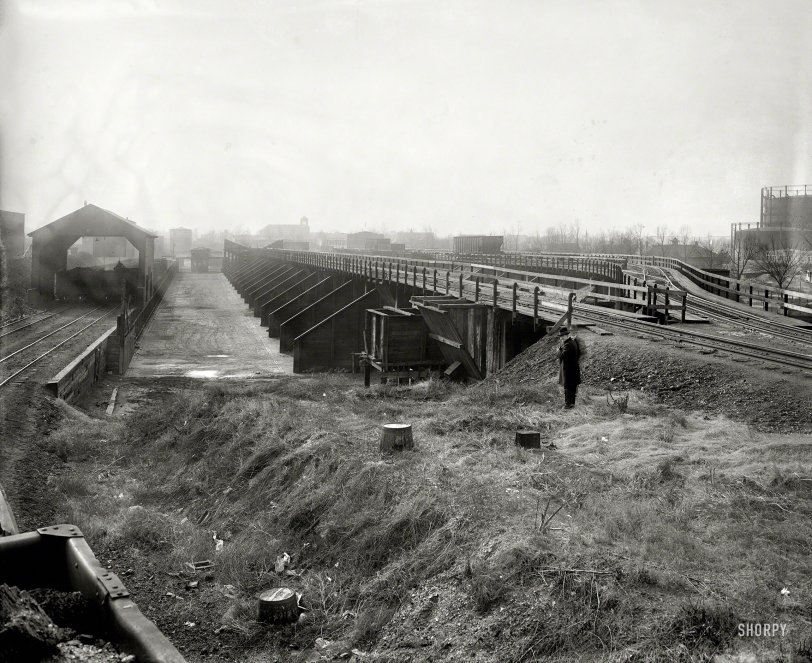


Framed or unframed, desk size to sofa size, printed by us in Arizona and Alabama since 2007. Explore now.
Shorpy is funded by you. Patreon contributors get an ad-free experience.
Learn more.

- Freeze Frame
- Texas Flyer wanted
- Just a Year Too Soon
- WWII -- Replacing men with women at the railroad crossing.
- Yes, Icing
- You kids drive me nuts!
- NOT An Easy Job
- I wonder
- Just add window boxes
- Icing Platform?
- Indiana Harbor Belt abides
- Freezing haze
- Corrections (for those who care)
- C&NW at Nelson
- Fallen Flags
- A dangerous job made worse
- Water Stop
- Passenger trains have right of way over freights?
- Coal
- Never ceases to amaze me.
- Still chuggin' (in model form)
- Great shot
- Westerly Breeze
- For the men, a trapeze
- Tickled
- Sense of loneliness ...
- 2 cents
- Charm City
- What an Outrage
- Brighton Park
Print Emporium
The Coalyard: 1920

Washington, D.C, circa 1920. "Chesapeake & Potomac Coal Co. yards." National Photo Company Collection glass negative. View full size.
Coal Sizes
Came across this because the first commenter posted a link to my site and I found the referrer in the logs. Thanks.
The coal sizes are common anthracite coal sizes, anthracite is hard coal. Anthracite goes through more screening and processing than soft coal because it is and always has been primarily used for home heating. The four most common sizes are Chestnut(Nut), Pea, Buckwheat(Buck) and Rice.
Nut and Pea are used in hand fired stoves, Nut is slightly larger than a golf ball and Pea is about the size of a quarter.
Buck and Rice are used in automatic stokers, Buck is about the size of a dime and rice is about the size of an eraser.
The sizes larger than nut like stove and egg are rare if available at all, the smaller sizes are used for other purposes like water filter media.
Mine run coal
I believe the term you are looking for is "mine run coal". That was coal right out of the mine without sorting or cleaning. It came in sizes from dust to lumps over a foot or two in size.
Workin' in the coal mine
Many Anthracite coal sizes were, and still are available, here are some currently available sizes: Egg, Stove, Nut, Pea, Buck, Rice, Barley, N0. 4 and N0. 5. See here for details.
We used to get what I recall was called "mill run" coal. These were big chunks of coal that was cheaper than sized. My brother and I used to get to go down in the basement into the coal bin and break it up into smaller more manageable pieces with sledge hammers. Woo-hoo, a fun and dirty job!
What a change
This was common in every city but is so lost now that I don't know how it was operated. So many bins but I know there wasn't that many grades of coal. Stoker coal and lump coal is all that I remember for home delivery and there must have been lots of coke for fuel from the coal gas that was stored in the gasometers at the right of the photo. To give you the fairly young point of view that I have, I asked the delivery man that brought coal to my elementary school in 1974 where it came from and he told me "Ohia". The Minneapolis school was converted to natural gas in the '80's.
























On Shorpy:
Today’s Top 5